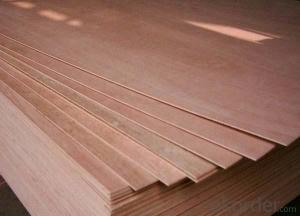When embarking on a DIY project or a home renovation, choosing the right material can make all the difference. Plywood and MDF board are two popular choices that often come up in discussions. But which one should you choose for your project? Let’s dive into the world of Plywood vs. MDF Board and find out which is right for you.
The Charm of Plywood
Plywood has been a favorite among woodworkers and DIY enthusiasts for decades. It’s made from thin layers of wood veneer, known as plies, that are glued together with their grains alternating at 90-degree angles. This cross-grain construction gives plywood its strength and durability. It’s also versatile, making it suitable for a wide range of applications, from cabinetry to furniture to structural components.
One of the reasons people love plywood is its natural beauty. The layers of wood veneer can showcase a variety of patterns and colors, adding a touch of elegance to any project. Plus, it’s relatively easy to work with, thanks to its solid wood feel and stable structure.
The Functionality of MDF Board
MDF, or Medium Density Fiberboard, is a man-made material that’s made from wood fibers and resin. It’s denser and heavier than plywood, which gives it a more uniform surface. This makes MDF ideal for applications that require a smooth finish, such as painting or laminating.
MDF is also known for its affordability. It’s a cost-effective option for those on a budget, and it’s easy to cut and shape, making it a popular choice for custom furniture and millwork. However, MDF is not as strong as plywood, especially when it comes to edge strength and resistance to moisture.
Aesthetic Appeal: Plywood vs. MDF
When it comes to aesthetics, plywood and MDF offer different looks. Plywood’s natural wood veneer layers can be sanded and finished to a high gloss, or they can be left as is for a more rustic look. The grain patterns in plywood can add depth and character to your project.
On the other hand, MDF’s smooth surface is perfect for a sleek, modern look. It’s easy to paint or apply a veneer to MDF, which makes it a great canvas for a variety of finishes. But remember, MDF is not as attractive when it comes to the natural wood grain.
Durability and Strength: A Closer Look
Durability is a key factor to consider when choosing between plywood and MDF. Plywood, with its cross-grain layers, is known for its strength and resistance to warping. It can handle more weight and is less likely to bend or twist over time.
MDF, while dense, is more susceptible to damage from moisture and is not as durable in the long run. It’s not recommended for outdoor projects or areas with high humidity. If you’re looking for a material that will stand the test of time, plywood is the way to go.
Ease of Use: Cutting, Drilling, and Finishing
Working with plywood and MDF requires different tools and techniques. Plywood’s solid wood layers make it sturdy and easy to work with, but it can be a bit challenging to cut and drill, especially for beginners. The grain direction can sometimes cause the wood to split or crack if not handled properly.
MDF, with its uniform composition, is easier to cut and drill. It won’t split or crack as easily, making it a good choice for those new to woodworking or DIY projects. However, it’s important to remember that MDF is heavier and denser, which can make it more difficult to handle, especially for larger pieces.
Cost Considerations
Price is always a consideration when choosing materials for a project. Plywood can be more expensive than MDF, but its durability and strength often justify the higher cost. If you’re working on a project where you need a material that will last, it might be worth investing in plywood.
MDF, being more affordable, is a great option for those on a tight budget. It’s also a good choice for projects where the material will be covered or painted, so the natural beauty of the wood isn’t as important.
Environmental Impact
Let’s not forget about the environment. Plywood is made from natural wood, which is a renewable resource. However, the manufacturing process can sometimes involve the use of urea-formaldehyde, a chemical that can be harmful if not properly controlled.
MDF, being a man-made material, can be seen as less environmentally friendly due to the use of additional resources and chemicals in its production. However, some manufacturers are working towards more sustainable practices and using alternative adhesives.
Making the Right Choice
Ultimately, the choice between plywood and MDF comes down to your specific project needs, your budget, and your personal preferences. If you’re looking for a strong, durable material with a natural wood look, plywood is the way to go. If you need a cost-effective option with a smooth surface for painting or laminating, MDF might be the better choice.
Remember, there’s no one-size-fits-all answer. Take the time to consider the pros and cons of each material, and choose the one that best fits your project. After all, the right choice will not only make your project look great but also ensure its longevity and functionality.
So, whether you’re building a piece of furniture, renovating a room, or constructing a structural element, knowing the differences between plywood and MDF will help you make an informed decision. Happy building!

